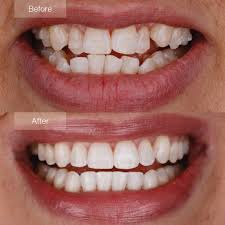Sinus Lift
A sinus lift, also known as sinus augmentation, is a surgical procedure designed to increase the amount of bone in the upper jaw, specifically in the area of the molars and premolars. This procedure is often necessary for patients who wish to receive dental implants but have insufficient bone height due to factors like bone loss or sinus expansion. During the surgery, the dentist lifts the sinus membrane and adds bone graft material to the space, allowing for new bone growth. A successful sinus lift provides the necessary foundation for dental implants, improving both the functionality and aesthetics of the patient’s smile.
Why Choose Sinus Lift?
Here are four reasons to choose sinus lift:
By increasing bone density in the upper jaw, a sinus lift can enhance facial contours and prevent the sunken appearance that may occur due to bone loss.
A sinus lift provides the necessary bone support for placing dental implants in the upper jaw, making it a crucial step for patients with insufficient bone height.
The procedure increases the likelihood of successful dental implant placement, leading to better long-term outcomes and improved oral health.
Sinus lifts can be tailored to meet individual needs, allowing dentists to use different grafting materials and techniques to achieve the best possible results for each patient.
How Does Sinus Lift Work?
Consultation and Planning
The process begins with a thorough examination, including X-rays or 3D imaging to assess the existing bone structure and sinus anatomy. The dentist creates a personalized treatment plan based on the patient's specific needs.
Anesthesia and Incision
During the procedure, local anesthesia or sedation is administered to ensure the patient’s comfort. The dentist then makes a small incision in the gum tissue to access the bone in the upper jaw.
Sinus Membrane Lifting
The dentist gently lifts the sinus membrane to create space for the bone graft material. This careful maneuvering is crucial to avoid damaging the membrane during the procedure.
Bone Grafting and Closure
Once the membrane is lifted, bone graft material is placed in the newly created space. The incision is then closed with sutures, and the area is left to heal, allowing the graft to integrate with the existing bone over several months before proceeding with dental implant placement.
Hear from Our Satisfied Patients

“I was nervous about the sinus lift procedure, but the team at ALBGTC made me feel comfortable and informed every step of the way. The surgery was quick and painless, and I was amazed at how smoothly everything went. Now, I’m ready for my dental implants, and I can’t thank ALBGTC enough for their expertise and care. My confidence is back, and I’m excited about my new smile!”
– Emily K.
“My experience with the sinus lift at ALBGTC was fantastic! The staff took the time to explain everything, which really eased my worries. The procedure was straightforward, and I felt supported throughout the entire process. I’m thrilled with the results, and I’m looking forward to my upcoming implants—thank you, ALBGTC, for changing my dental health for the better!”
– David K.

FAQs
A sinus lift is performed to increase bone height in the upper jaw, particularly when there is insufficient bone to support dental implants, often due to bone loss or sinus expansion.
Recovery typically takes several months for the graft to integrate with the existing bone, but initial healing may occur within a week or two. Most patients can return to normal activities shortly after the procedure, following their dentist’s post-operative care instructions.
Patients usually report minimal discomfort during the sinus lift procedure due to local anesthesia or sedation. Post-operative discomfort can generally be managed with over-the-counter pain relievers.
Dental implants can usually be placed approximately 4 to 6 months after the sinus lift, once the graft has adequately healed and integrated with the bone. Your dentist will provide specific timing based on your individual recovery progress.


